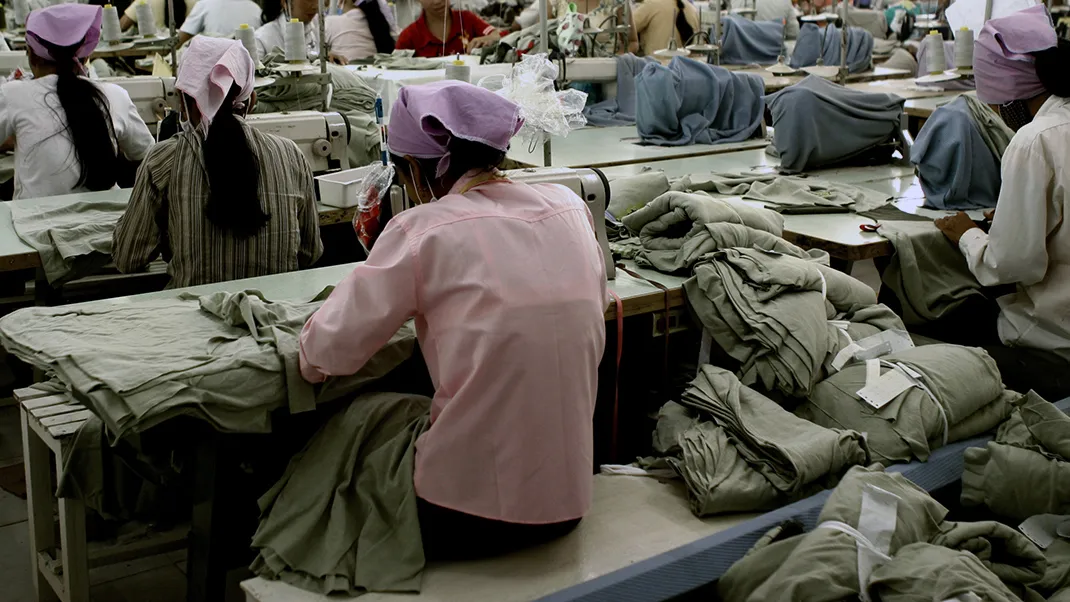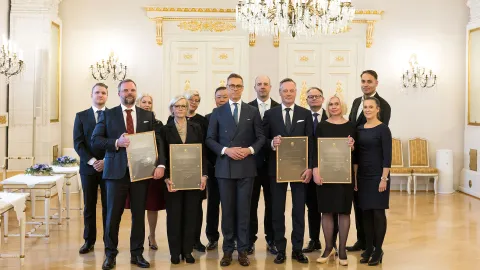Environmental and social issues will be highlighted in export credit guarantee applications – these things will change on the forms

Published date
Finnvera’s policy on the environmental and social risk management of the financing operations was revised a year ago. Issues related to the new policy will be reflected in new export credit guarantee applications. The forms will feature questions on the use and location of the export product as well as on its potential environmental and social impacts and risks. The purpose of these preliminary questions is to facilitate the processing and screening of the guarantee application.
According to Finnvera’s environmental and social risk management policy, the assessment of transactions to be financed is guided by a risk-based approach, not only by the size or the repayment period of the transaction. The evaluation of human rights risks also plays a more prominent role. In line with the policy, potential risks will be analysed in all export credit guarantee applications.
In January 2021, the PDF application forms for Export Receivables Guarantees, Credit Risk Guarantees, Bill of Exchange Guarantees, Buyer Credit Guarantees and Receivables Purchase Guarantees will be updated.
What will change?
The structure of the applications will be harmonised and the same basic details will be asked in all applications. In the future, applications will require information related to the KYC obligations: information on beneficial owners and so-called PEP information, i.e. whether the client (exporter) is a politically exposed person.
The more extensive screening of environmental and social risks will bring along entirely new information needs.
“From now on, the applicant will be asked about a new type of product category to determine whether the product is a capital product or not. In addition, information about the end user of the product, the country of use and the industry in which the product will be used will be requested. We also encourage applicants to explain in plain language and in sufficient detail what the export product is and what kind of investment it is associated with. It helps us at Finnvera to understand what the transaction is all about: what will be exported and where it will be used. In the future, the application will also feature updated questions related to the applicant’s due diligence related to the transaction as well as observations on environmental and social impacts and risks. Good basic details will make the processing of the application easier and get the assessment off to a good start, and not all information will need to be collected afterwards,” says Taru Eskelinen, Senior Adviser in Environmental and Social Risk Management at Finnvera.
When exporting capital goods
The additional information in the application will be required whenever the payment period for the export product is 2 years or more, or whenever the export product is capital goods. In addition to major factory investments, capital goods include, for instance, agricultural and forestry machinery and equipment, cranes, crushers, ships and other mobile machinery and equipment, and health care equipment. Planning and service work, software, and IT and ICT projects are also considered capital goods.
In these cases, the applicant is asked to provide more detailed information on the export location and the nature of the investment. The analysis topics include, among other things, the nature values of the project area, and whether the investment could have impacts on the people who live in the area and potentially belong to vulnerable groups.
Corporate responsibility is receiving greater emphasis in enterprises and financing
Essentially, the changes in the application and information gathering process are based on the fact that the State of Finland, as Finnvera’s owner, has said that the United Nations Guiding Principles on Business and Human Rights (UNGPs) should be taken more into account in the assessment of financing transactions. UNGPs were included in Finnvera’s own environmental and social risk management policy, approved by Finnvera’s Board of Directors in late 2019. The policy requires the screening of all applications, and the new forms are an important tool for obtaining the necessary basic details on transactions. The same practices are already applied in many export credit agencies in other countries.
“Companies may wonder whether ticking a box or not may affect the processing of an application, or the granting of an export credit guarantee. We stress that there are no right or wrong answers to the questions and they do not lead to rejection. If you encounter any challenges, contact us. We want to guide export companies to see what matters are worth paying attention to. For the buyer, the message can, at its best, be that we are interested in what the investment’s impacts are locally and how the end user manages potential risks.”
The new application forms will be available on Finnvera’s export credit guarantee website on 11 January 2021.
Further information:
Taru Eskelinen, Senior Adviser, Environmental and Social Risk Management, tel. +358 29 460 2670
Marika Late, Development Manager, tel. +358 29 460 2810
Marjaana Vainio-Mattila, Team Manager, tel. +358 29 460 2816
email addresses are in the format [email protected]
Link to Finnvera's Environmental and Social Risk Management policy.



